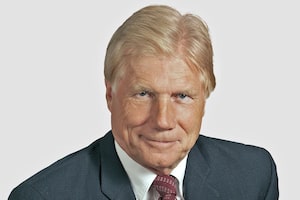When talk turns to the slew of problems presented by today’s media ecosystem, my thoughts go back to years in Washington for this newspaper covering parts of the Jimmy Carter and Ronald Reagan administrations.
It’s stunning how much has changed. Today, you’re hit by a 24-hour media bombardment. The political bluster, bombast and rants are inescapable.
Back then, there was hardly any of that. The news, and views on the news, took up only a very small portion of one’s day. The major TV networks ran their half-hour news broadcast in the evenings. Trusted anchormen such as Walter Cronkite and John Chancellor summed up the day’s events. Save for the Sunday morning shows, that was about it.
Panels of talking heads, ubiquitous today, were not to be found, nor were talk-radio evangelists – Rush Limbaugh, the most influential among them, passed away Wednesday – pitching their prejudices. Newspapers had only a couple of columnists, not the multitude we see now.
Not only were the media numbers lean, so were their political offerings. There were no cable networks. The main networks all operated from a similar centrist political perspective, helping create a consensus in the country, a shared reality. They were the mainstream, and the mainstream was the only stream. Voices of the far right and hard left had no big platforms.
Post-1990, advocacy journalism began its takeover. Under Mr. Reagan, the Fairness Doctrine, which required broadcasters to have balanced coverage, was eliminated. Then came Fox News and the internet and social media and Twitter. Everybody had a soapbox, free licence to debase the public discourse with their biases, insults and ideologies.
The age of wrath arrived – political sectarianism at unseen levels – and the question now is how and if the U.S. can emerge from it.
Since the crisis of disinformation is as much responsible for the cultural carnage as the politicians themselves, much will depend on whether the media ecosystem can be set right.
No one should be placing bets on such an outcome.
Communications clairvoyant Marshall McLuhan contended way back in the 1960s that the electronic global village would paradoxically lead to retribalization. Media tribalism is upon us now.
The internet has allowed the far reaches of the right and, less so, the left, to come marching in, replacing the old consensus, the shared realities, with primal impulses. “The old fringes,” as Kurt Andersen writes in his book Fantasyland: How America Went Haywire, “have been folded into the new centre. The irrational has become respectable.”
Donald Trump’s daily attacks on the press have cut deeply into media credibility. Trust in traditional media is at less than 50 per cent, considered a historic low.
Under the old media dynamic, Mr. Trump’s falsifications could never have found such an enormous following. The big lie that the election was stolen gained the credibility it did by virtue of right-wing media giving it oxygen, not calling him out.
In the political arena today, most points of view, no matter how fact-based, are reflexively written off as motivated by bias by one side or the other. The New York Times and The Washington Post aren’t just seen as liberally inclined newspapers. Trumpians have pigeonholed them as founts of left-wing ideology.
The media has long trended toward opinion journalism because hot takes get a larger audience than nuanced and balanced perspectives. That trend is not about to change.
Cable news networks CNN and Fox are locked in their ideological zones, reinforcing the two media solitudes.
Social media has taken needed steps to regulate content. Twitter, Facebook and Instagram have banned Mr. Trump and censored other controversial social-media accounts. But this has triggered bitter opposition on the right as an infringement of free speech.
Debates in the journalism community aren’t coming to any consensus on how to regain credibility. Some say the traditional newsworthiness code of giving weight to each side of a story should be maintained. Others argue that this allowed Mr. Trump’s assault on the truth to partially succeed.
His Twitter ban is already helping to soothe the public dialogue. Joe Biden’s presence should do that as well, although the right is hard at work bashing anything good that is said about him as being the result of sycophantic woke journalism.
Fixing America requires fixing the media. The country needs to get the middle back, but the fractured state of the media complex militates against that prospect. The age of wrath was a long time in coming. It will be a long time in going.
Keep your Opinions sharp and informed. Get the Opinion newsletter. Sign up today.
 Lawrence Martin
Lawrence Martin